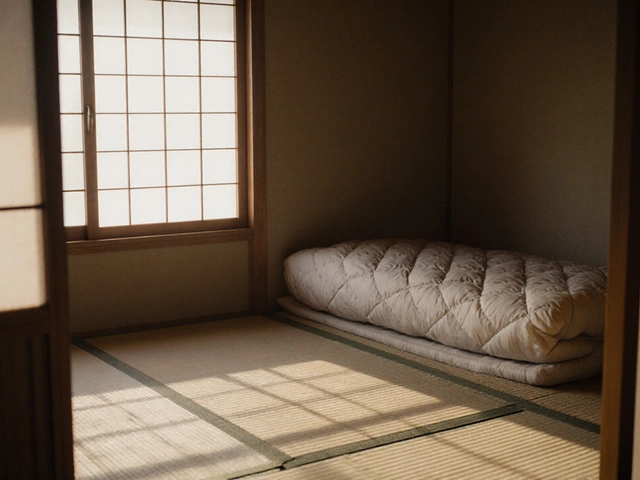Walk down any hardware store aisle and you’ll see mouse traps stacked next to every kind of homegrown remedy—mint oils, steel wool, and dryer sheets. It’s the last one that usually catches people off guard. Could something you throw in with your laundry really stop a hungry little rodent? If you’ve ever opened a cupboard to find mouse droppings and wondered if a Bounce sheet would keep the critters away, you’re not alone. Some folks swear by this hack, but are mice truly scared off by the fresh scent of linen? The idea sounds almost too easy, right? But there’s more to fighting mice than a quick spritz or a sweet-smelling corner. Let’s dig into what’s real, what’s rumor, and how you can actually protect your space from little invaders.
Why Do People Think Dryer Sheets Repel Mice?
The dryer sheet trick pops up everywhere, from neighborly advice to viral social media hacks. The logic is simple—dryer sheets come loaded with strong fragrances, and people assume rodents will find the smell too overpowering and steer clear. Some even claim the chemical ingredients, like linalool or beta-citronellol, are naturally unappealing to critters. There’s also the idea that since we have sensitive noses and find these scents a bit much up close, tiny animals must find it downright unbearable.
It’s not all made up. Certain smells really do act as repellents for some animals. Take peppermint oil, for example—there’s real science behind rodents disliking intensely minty environments. Mothballs too, distribute a vapor mice can’t tolerate over time. But dryer sheets? The evidence is far thinner. There are a few anecdotal stories, sure. Posts online talk about mice steering clear of pantries lined with dryer sheets, or garages where the floor is sprinkled with store-brand softeners. But every time scientists have tried to put this hack to the test, the results are underwhelming. In one experiment from the University of Nebraska-Lincoln, researchers placed dryer sheets in mouse-infested spaces and saw little difference—mice seemed entirely unbothered after a day or two.
TV shows like “MythBusters” have even given the hack a try, attracting more laughs than data. The idea usually comes down to wishful thinking: people want a cheap, easy fix, so these clever tricks stick no matter what the science says. It’s hard to beat the hope of solving a mouse problem with a box of laundry supplies. But the real world doesn’t play by those rules.
What Happens When You Rely on Dryer Sheets?
So what if you just go ahead and line every gap and opening in your home with dryer sheets, hoping for peace of mind? Here’s where things get tricky—the overwhelming majority of people who’ve tried this report little change. Some even notice mice crawling right over the sheets, nesting among them for warmth. Mice are creatures of habit and comfort; they aren’t much bothered by novelty after a day or two.
Consider life from a mouse’s point of view. Food, warmth, and safety come first. If you leave a source of breadcrumbs or a cozy spot to hide, a little artificial scent won’t keep them out, no matter how strong. And if mice have already settled in, they’re even less likely to move until the resources dry up. In a survey published by the National Pest Management Association in 2022, professional exterminators said they rarely see any evidence that scented dryer sheets keep rodents away.
Let’s get even more down to dinner-plate brass tacks. Have a look at this real-life scenario: A storage shed in Ohio, filled with holiday decorations, was lined with scented dryer sheets after a mouse scare. Not only did the critters chew right through the sheets, but they also used scraps of them for bedding. The owner found nests with dryer sheet fluff right next to disused juice boxes and plastic bags. If there’s one thing a mouse loves, it’s a soft, warm, dry place to lay down for the night. Dryer sheets provide exactly that. Whoops.
And here’s the kicker: The scent that’s so strong on day one doesn’t last. After a week, the aroma fades, reducing any slim chance of annoyance. Dryer sheets just weren’t built as a pest repellent—they’re for static-free jeans, not rodent battles. Think about how many times you’ve had to add more sheets to keep that “fresh” smell in your sock drawer. Mice are patient. They’ll wait.

Dryer Sheets vs. Real Rodent Control
So, if the dryer sheet solution is a dud, what actually works? First off, you have to get a handle on why mice are there in the first place. Mice need food, water, and shelter—cut those off, and you cut your population. Keeping counters free of crumbs, locking up pet food, sealing dried goods in glass or metal, and not letting dirty dishes pile up are the basics. Turns out the boring advice is the most powerful.
Next up, it’s all about finding points of entry. A mouse can squeeze through a hole the size of a nickel. Grab a flashlight and crawl around baseboards, the back of your pantry, and the edges of your garage. Look for chewed openings and block them with steel wool or caulking. Here’s a wild stat: One professional rodent control company found that plugging up holes cut mouse activity by up to 80% compared to homes relying mainly on store-bought repellents. That’s a massive improvement for something so simple.
Traps are another classic, and for good reason—they work. Snap traps, electronic traps, and even some live-catch models can quickly reduce a population if you find an active infestation. Bait with peanut butter, seeds, or chocolate—yes, mice have a sweet tooth—and check the traps daily. The more traps you set, the better your odds. One recommended rule: you should have at least six traps in a typical kitchen, doubling up near evidence like droppings or chewed food packaging.
Compare the numbers:
| Method | Effectiveness (Avg. Reduction in Rodent Activity in 2 Weeks) |
|---|---|
| Dryer Sheets | 5% or less |
| Seal Entry Points | Up to 80% |
| Professional Trapping | 90%+ |
| Peppermint Oil | 10-20% (short-term) |
| Store-bought Repellents | 20-30% |
Notice how dryer sheets don’t even make a dent compared to other strategies. Why settle for last place?
Tips to Keep Mice Away for Good
Mice are clever, but people who outsmart them are persistent. So here’s what works, straight up—no magic sheets or late-night infomercial gadgets. Start by tidying up. Sweep under appliances, empty trash every day, and put snacks into sealed jars or tins. Next, survey your home like a mouse would. Can you see daylight under the back door? That’s a mouse highway. Weatherstripping, door sweeps, and caulk can turn an easy shortcut into a frustrating dead end.
If you keep finding mouse droppings or chewed boxes, up your trap game. Bait traps with a dab of peanut butter, a bit of nut chocolate, or even a small strip of cooked bacon. Place them along walls—mice hate open spaces but love scurrying along the edge of a room. It’s not about fancy supplies; it’s about persistence. Reset traps and check them often. If traps aren’t enough, set out glue boards, but remember to use these carefully—pets and kids might get into them.
Don’t forget the outside. Firewood piles, heaps of old boxes, and unraked leaves are party zones for mice. Keep grass trimmed short and store things off the ground. If you have a shed or garage, vacuum up crumbs and put pet food in metal bins. Trim bushes that touch the side of the house. The harder you make it for them to get close, the less likely they’ll try moving in.
If you find yourself truly overrun—if you hear scurrying at night or see gnawed wires—don’t rule out calling in the pros. Pest control companies have access to better solutions and know the habits of local rodents. There’s no harm in asking for a quote after you’ve tried the basics.

The Bottom Line: Dryer Sheets and Mouse Myths
So do dryer sheets keep mice away? Not really. The science just doesn’t back up the hype, and the most convincing stories usually come down to coincidence more than solid proof. Mice want food and safety, and a little fragrance isn’t enough to spook them. If you like the fresh-laundry smell, by all means, stash a sheet in your closet. But when it comes to mouse control, save those squares for your next load of jeans. The most effective moves are simple—seal up gaps, keep things clean, and set traps where needed. Smarter strategies always beat shortcuts. No hacks, no gimmicks, just common-sense defense. Next time you catch a whiff of fresh linen, smile and think about laundry—not rodent battles—and rest easy knowing your home is mouse-free for real.




